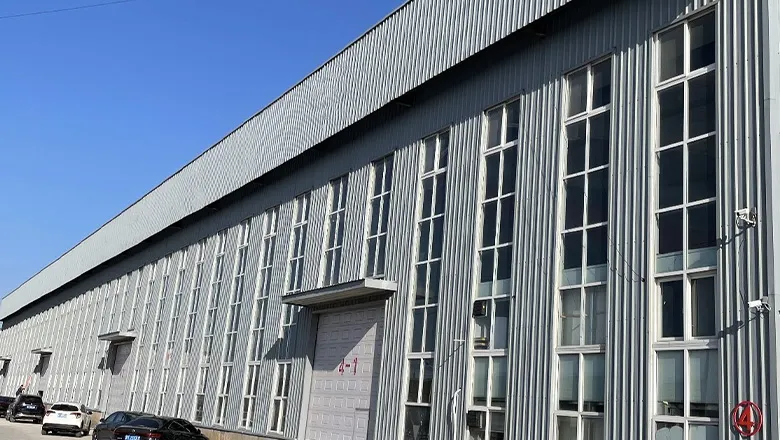loading...
- No. 9, Xingyuan South Street, Dongwaihuan Road, Zaoqiang County, Hengshui, Hebei, China
- admin@zjcomposites.com
- +86 15097380338
- Welcome to visit our website!
Understanding the Basics of Water Pressure Tanks and Their Importance in Plumbing Systems
Understanding Water Pressure Tanks Essential Components for Efficient Water Systems
Water pressure tanks, also known as pressure storage tanks or hydropneumatic tanks, play a crucial role in modern water supply systems. They are used in various applications, from residential well systems to large commercial water systems. Understanding the function and importance of water pressure tanks can help homeowners and business owners maintain an efficient water system, enhance the longevity of their equipment, and improve overall water management.
What is a Water Pressure Tank?
A water pressure tank is essentially a vessel designed to store water and maintain pressure within a water supply system. It typically consists of a steel shell, an inner bladder or diaphragm, and an air chamber. When water is pumped into the tank, the bladder inflates, compressing the air in the chamber above it. This compression creates pressure that pushes water out of the tank when needed, ensuring a steady supply of water to fixtures and appliances.
How Do Water Pressure Tanks Work?
The operation of a water pressure tank is based on hydraulics and physics. When a water pump fills the tank, it pushes water into the bladder, causing it to expand and compress the air in the upper chamber. As the water demand increases—such as when a faucet is opened or a toilet is flushed—the compressed air forces the water out of the tank and into the plumbing system.
Most water pressure tanks are equipped with a control switch that starts or stops the pump based on the pressure readings within the tank. Typically, there is a preset pressure range when the pressure drops to a certain level (the cut-in pressure), the pump activates to refill the tank. Once the desired pressure is reached (the cut-out pressure), the pump stops.
Benefits of Water Pressure Tanks
1. Stable Water Pressure One of the primary benefits of a water pressure tank is the stabilization of water pressure. By providing a reserve of pressurized water, the tank can compensate for fluctuating water demands, ensuring a consistent flow rate throughout the system.
2. Reduced Pump Cycling Without a pressure tank, the water pump would need to turn on and off frequently to meet immediate water demands, leading to increased wear and tear. By maintaining a reservoir of pressurized water, the tank reduces the frequency of pump cycles, thus extending the lifespan of the pump.
3. Energy Efficiency Operating a pump consumes energy, and frequent cycling can lead to energy wastage. A well-sized pressure tank can optimize pump operations, resulting in lower energy costs over time.
water pressure tank

4. Emergency Supply In the event of a power outage or pump failure, a water pressure tank can provide a temporary supply of water. This reserve can be vital for essential uses, especially in remote areas where water might not be readily available.
5. Versatility Water pressure tanks are suitable for various applications, from small residential settings to large industrial systems. They can be used in home water systems, irrigation solutions, and fire suppression systems, highlighting their versatility.
Choosing the Right Water Pressure Tank
When selecting a water pressure tank, several factors must be considered to ensure optimal performance
- Tank Size The tank's size should correlate with the household's water usage. A larger tank can store more water, reducing the need for frequent pump activation.
- Pressure Settings It is essential to set appropriate cut-in and cut-out pressure levels. Choosing the right settings can optimize the balance between sufficient water supply and energy efficiency.
- Material and Construction Tanks can be constructed from various materials, including steel and fiberglass. Choosing durable materials that can withstand corrosion and prolonged use can enhance the tank's lifespan.
Maintenance of Water Pressure Tanks
Regular maintenance of water pressure tanks is crucial for their efficient operation. This includes checking air pressure levels, inspecting for leaks, and ensuring that the pump and bladder are functioning correctly. Many manufacturers recommend annual inspections to preemptively address potential issues.
Conclusion
Water pressure tanks are vital components of efficient water supply systems. They provide stable pressure, reduce pump cycling, contribute to energy savings, and offer emergency water supplies when needed. By understanding their function, benefits, and maintenance needs, homeowners and businesses can optimize their water systems for long-term performance and sustainability. Whether for residential use or larger commercial applications, investing in a quality water pressure tank is a step toward efficient water management and system reliability.
-
The Rise of FRP Profiles: Strong, Lightweight, and Built to LastNewsJul.14,2025
-
SMC Panel Tanks: A Modern Water Storage Solution for All EnvironmentsNewsJul.14,2025
-
GRP Grating: A Modern Solution for Safe and Durable Access SystemsNewsJul.14,2025
-
Galvanized Steel Water Tanks: Durable, Reliable, and Ready for UseNewsJul.14,2025
-
FRP Mini Mesh Grating: The Safer, Smarter Flooring SolutionNewsJul.14,2025
-
Exploring FRP Vessels: Durable Solutions for Modern Fluid HandlingNewsJul.14,2025
-
GRP Structures: The Future of Lightweight, High-Performance EngineeringNewsJun.20,2025
